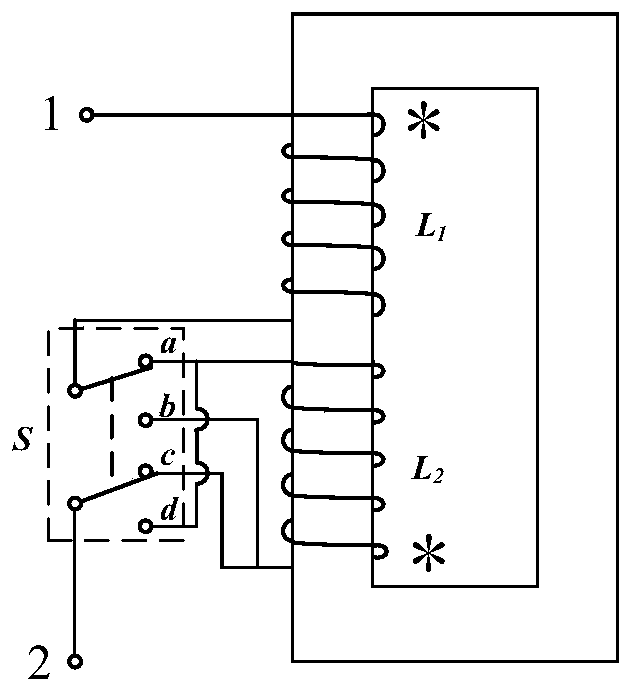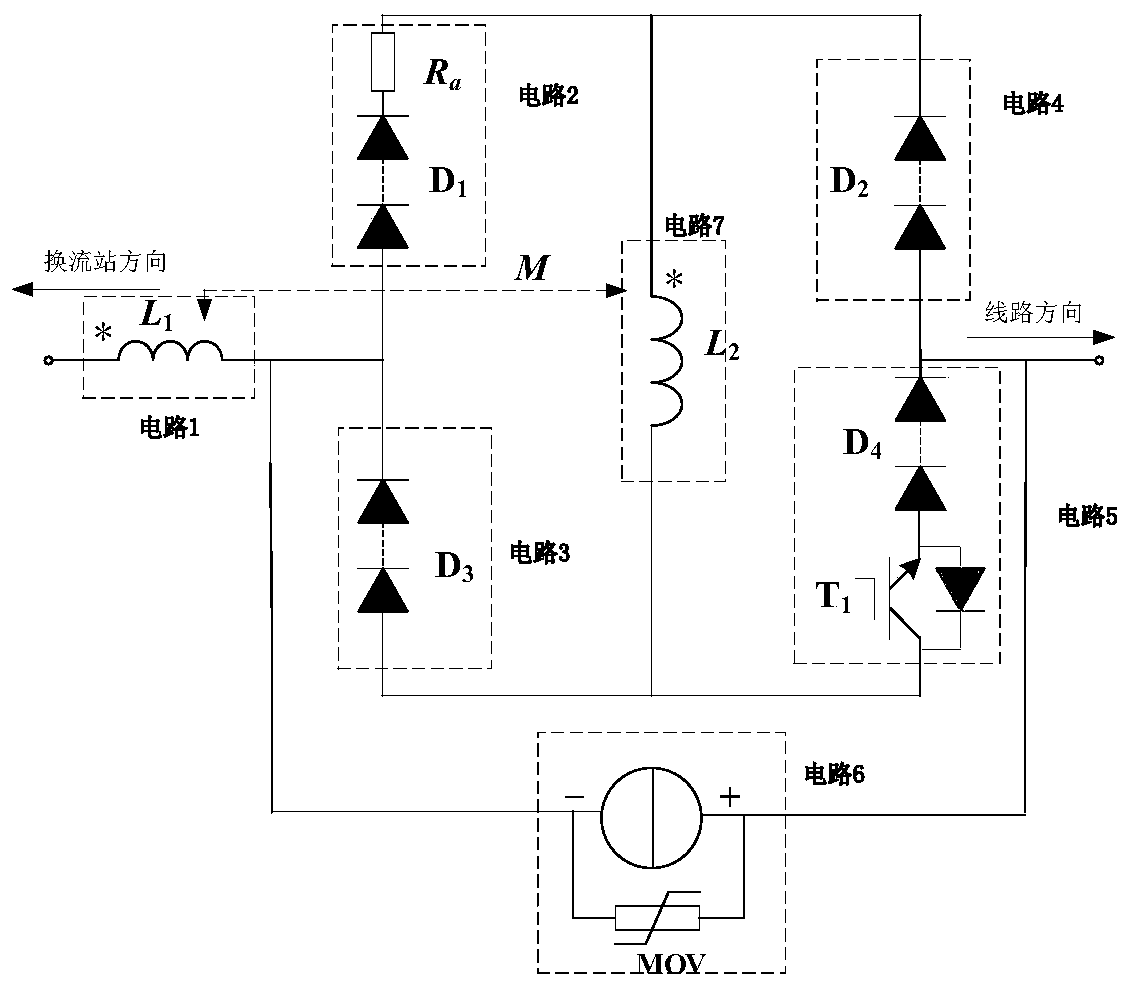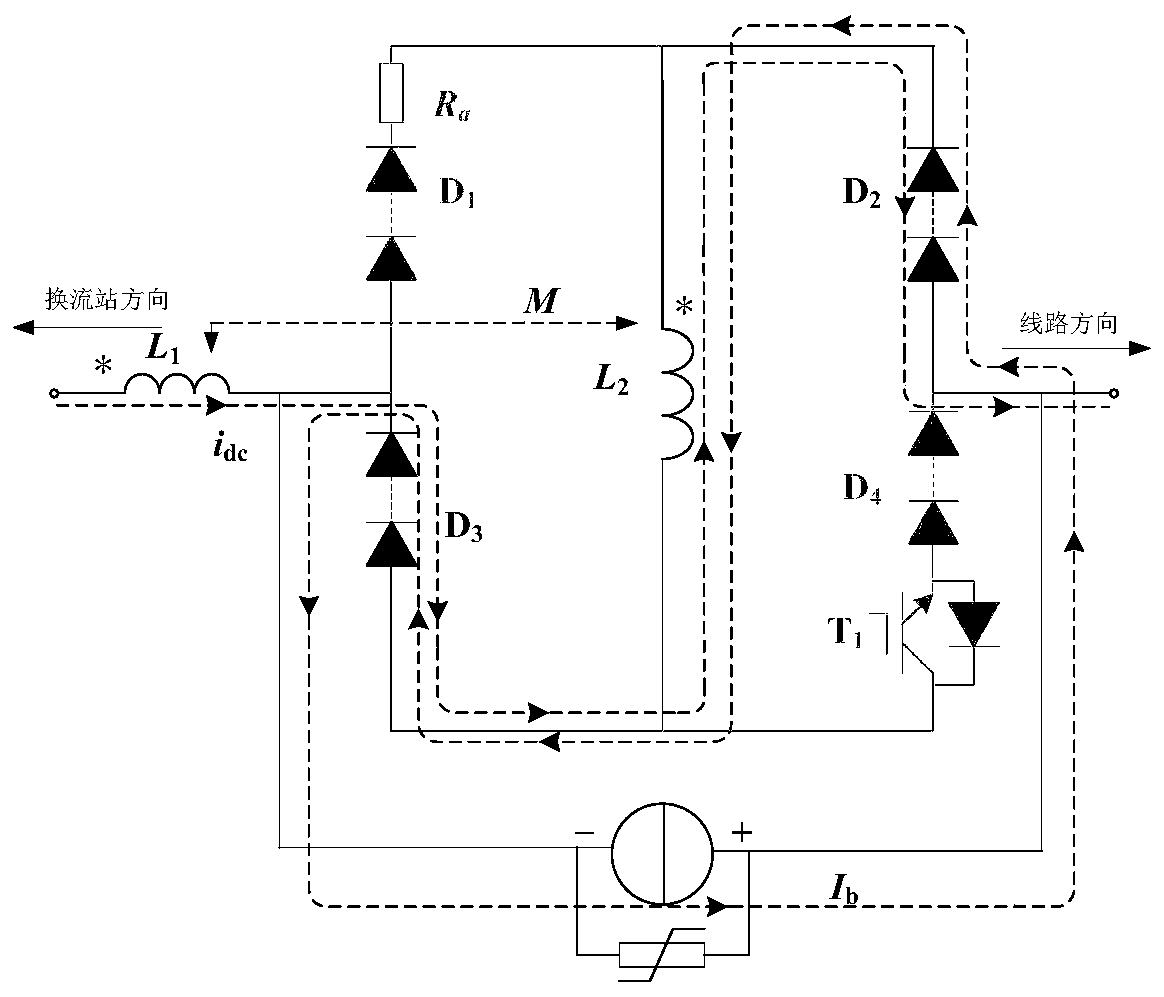Resistance-inductance type DC current limiting apparatus and method based on magnetic coupling enhancement characteristics
A technology of a current limiting device and a current limiting method, which is applied to emergency protection circuit devices, circuit devices, emergency protection circuit devices, etc. for limiting overcurrent/overvoltage, and can solve the difficulty of short-circuit current limitation and the rapid rise of fault current and other problems, to achieve the effect of good current limiting effect, fast response speed of current limiting, and small impact
- Summary
- Abstract
- Description
- Claims
- Application Information
AI Technical Summary
Problems solved by technology
Method used
Image
Examples
Embodiment Construction
[0016] The technical solution of the present invention will be described in detail below in conjunction with the accompanying drawings and embodiments. The embodiment is only an example, and is not intended to limit the technical solution of the present invention.
[0017] Such as figure 1 As shown, it is a schematic diagram of a resistive-inductive DC current limiting method based on magnetic coupling enhancement characteristics of the present invention. The current limiting method consists of a switching device S, a pair of fully coupled inductance coils L wound on the same iron core with equal self-inductance 1 , L 2 accomplish. During normal operation, the double-pole double-throw switch S is closed at the b-side and d-side, and the line current flows in from the different-named ends of the two coupled inductor coils, the magnetic flux cancels each other, and the equivalent inductance of the current limiter is almost 0; short circuit After a fault occurs, the switch S ...
PUM
 Login to View More
Login to View More Abstract
Description
Claims
Application Information
 Login to View More
Login to View More - R&D
- Intellectual Property
- Life Sciences
- Materials
- Tech Scout
- Unparalleled Data Quality
- Higher Quality Content
- 60% Fewer Hallucinations
Browse by: Latest US Patents, China's latest patents, Technical Efficacy Thesaurus, Application Domain, Technology Topic, Popular Technical Reports.
© 2025 PatSnap. All rights reserved.Legal|Privacy policy|Modern Slavery Act Transparency Statement|Sitemap|About US| Contact US: help@patsnap.com



